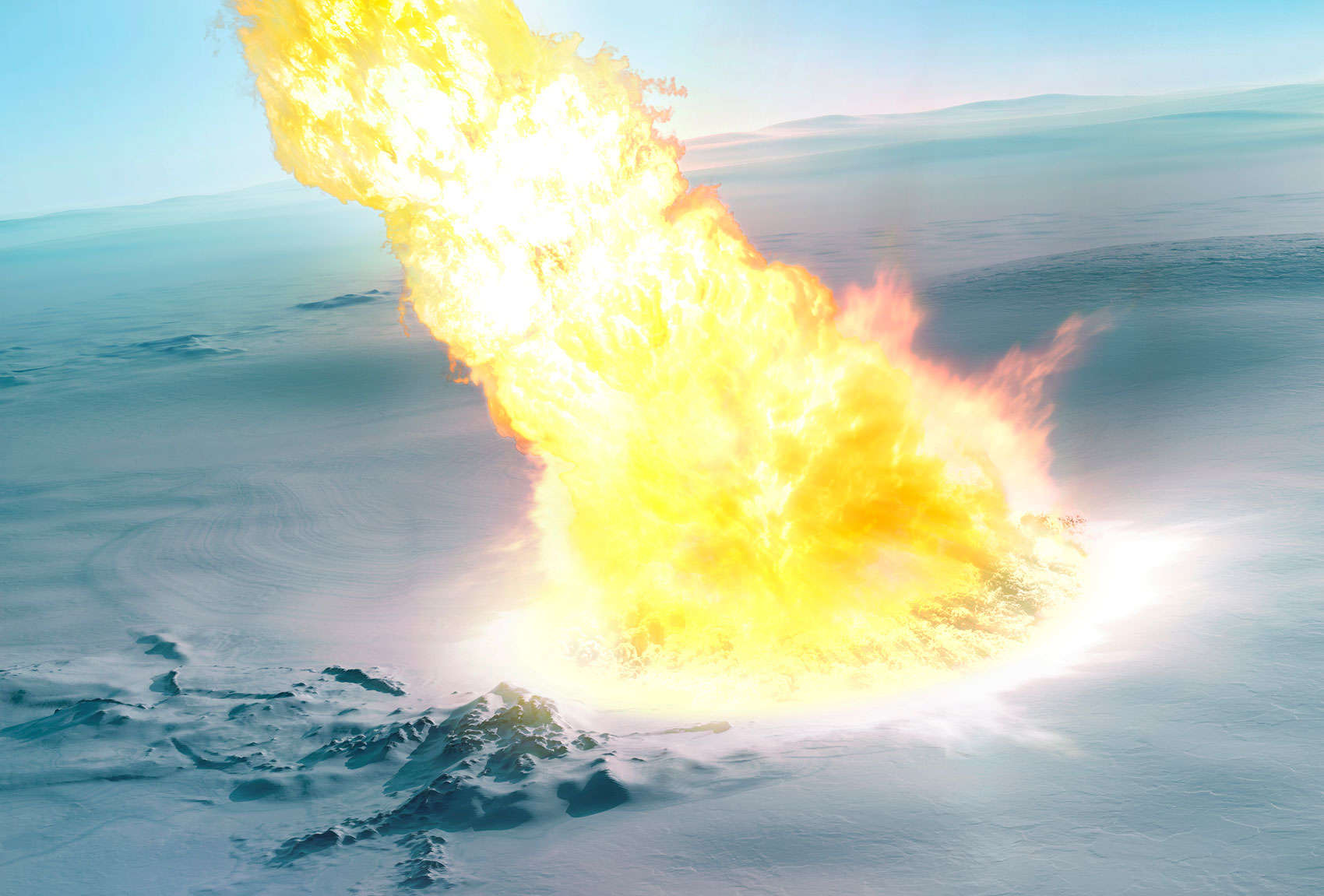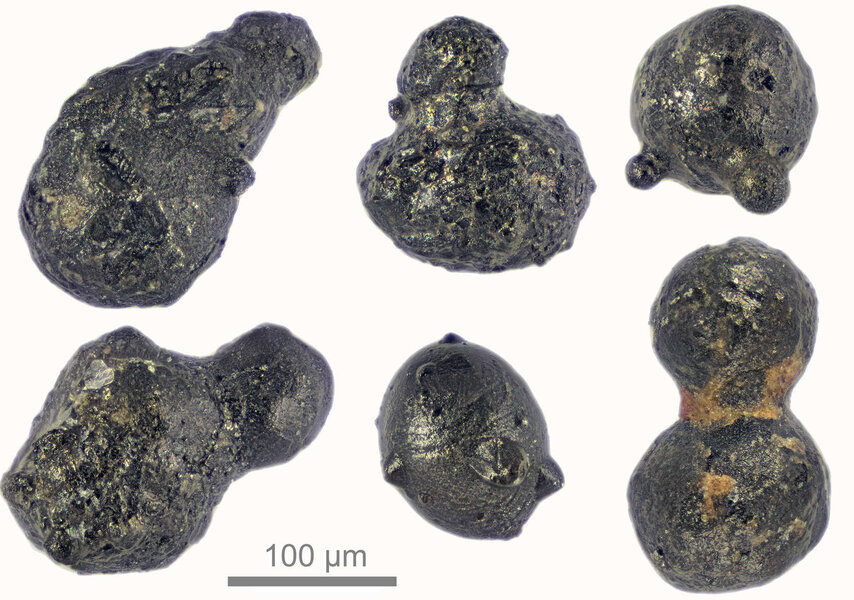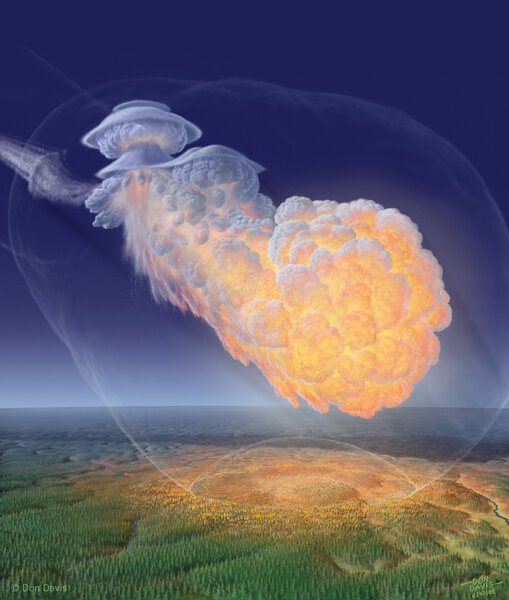Create a free profile to get unlimited access to exclusive videos, sweepstakes, and more!
A half million years ago, Antarctica was hit by a blowtorch from space

Sometime a bit less than a half million years ago, a decent-sized asteroid impacted over Antarctica. But it didn't hit the ground. Instead, it vaporized high above Earth's surface and created a white-hot blowtorch of superheated gas that touched down on the ice and released energies similar to that of a nuclear bomb.
The evidence for such a big event is surprisingly subtle: Scientists have found tiny spheres of rock and iron on the top of a mountain in coastal Antarctica. They're small, not much wider than a human hair, but tell the story of the fiery impact.
The material collected was found on Walnumfjellet, a peak in the Sør Rondane mountain range on the coast of Antarctica, about 4,000 km south of South Africa. This range of peaks reaches roughly 3,000 meters high, and the summits ice-free. Dating techniques show that the area the material came from has been exposed for at least 870,000 years.
The debris pieces found are called impactites, minerals made upon impact. They're spherules some 100 to 300 microns wide (a human hair is about 100 microns in diameter, or about a tenth of a millimeter). When I first saw them I thought they resembled tektites, dark glassy material blasted off the ground in a big impact. The huge energy and heat released upon impact melt soil into glass, which gets thrown into the air, cools, and creates really cool spherules and double-lobed shapes (like bowling pins).
But these spherules are different. They have very little glass in them, and are instead mostly rock, olivine (a simple and common mineral both on Earth and in asteroids) and iron. The rock is chondritic in nature, which is common among asteroids; it's material that formed very early in the solar system when dust particles in deep space collided and stuck together. This type of material is called unmodified, meaning it never melted or underwent processes that occur in planetary formation, which means you don't find it on Earth unless it came from space.
The spherules are also high in nickel, which again is very rare on Earth's crust, but more common in space. There's little doubt this stuff came from Out There.
But that's weird, because tektites are mostly made from materials in the ground, not the impactor. Yet this stuff is mostly impactor material. Even weirder, there's an unusually low amount of an isotope of oxygen called oxygen-18 in the spherules. Usually extraterrestrial material is high in that isotope. However, Antarctic ice is low in it, so this implies the material interacted with the ice somehow.
This all feels self-contradictory. How is this possible?
The scientists who did the study think that this came from an asteroid impact. A chondritic asteroid, probably 100 – 150 meters across, came screaming into our atmosphere at high speed, likely 20 kilometers per second. The immense pressure it generated as it plowed through the air caused the rock in the asteroid to crumble, and the temperature in the shock wave it made heated it to a staggering 30,000° C. This happened in seconds, causing the rock to vaporize.
In smaller impacts — like the one over Chelyabinsk, Russia in 2013, where the asteroid was 19 meters across, or the even larger Tunguska impact of 1908 — this creates an explosion, a sudden release of all that energy, high above the ground, and the vaporized rock disperses.
But for asteroids in the 100-meter range the vapor cloud created can hold together, continuing on toward the ground, forming what's called a jet of superheated gas, a narrow, focused column of incredibly hot material. This can actually make it all the way to the ground. It hits like a blowtorch, melting material on the ground and blasting it high into the atmosphere.
In the case of the Antarctic event, it hit ice. The superheated vapor jet, now about a kilometer wide, touched down and melted some of the ice underneath it. The pressure wasn't enough to melt all the way through and make a crater — explaining why no crater is found there — but the ice interacted with that vaporized asteroidal material, and in those few seconds as the material cooled it exchanged oxygen atoms with the ice, giving it the low oxygen-18 abundance. As it cooled it formed the spherules, and some of them collided and stuck together in the dense environment of the jet.
The impact then sent a plume back up into the sky, which may have reached an altitude of 400 kilometers. As this collapsed back down to Earth it spread the newly formed spherules over many thousands of kilometers thanks to winds.
That last bit is interesting. Similar spherules have been found in ice cores taken in different parts of Antarctica, including one called Dome-C, dated to 430,000 years ago and thousands of kilometers from the Sør Rondane mountains. It may be these came from the same event, which happened somewhere over Antarctica and spread the debris all over the continent.
There are also spherules from another ice core called Dome Fuji, closer to the mountains, but their composition is different and it's not clear they're from the same event. Interestingly, they've been dated to 480,000 years ago, though, which is close in time. Impacts like this happen on average every hundred thousand years, so these may have been separate events, but given timing uncertainties it's not impossible they came from the same one.
"Touchdown jet" events are difficult to study. Smaller impacts like Chelyabinsk happen on a timescale of centuries, so they are far more common and easier to analyze. Cratering events are far more rare, but leave behind a fairly large calling card (the crater) that can be studied later. The only way to investigate the jets is to find the nearly microscopic debris they leave behind. In Antarctica that's not too hard, but that's less than 10% of Earth's surface.
Perhaps more spherules like this are on the ocean floor, or mixed in with sediments on land. Hopefully, more historical impact events like these can be found, so that we can understand them better. If something like this happened today, over a populated area, well, that would be bad. In that sense, at least, it's a good thing they're so rare.

















